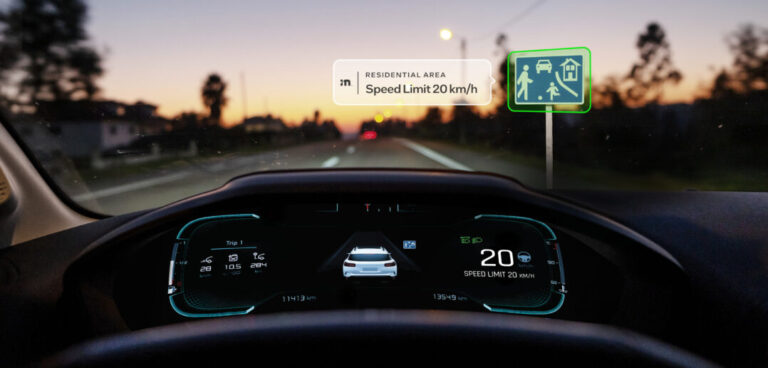Mobileye has revealed what it states is the world’s first vision-only Intelligent Speed Assist (ISA) solution for automotive OEMs, having successfully completed testing and certification in Europe. The camera-only system will debut in production vehicles this year, helping OEMs to meet new EU General Safety Regulation (GSR) standards which now require the automatic sensing of speed limits in all new vehicle models – without relying on third-party map and GPS data.
The software, developed for Mobileye’s EyeQ platform, is certified for use in 27 EU countries, in addition to Israel, Norway, Switzerland and Turkey. An added benefit is that the EyeQ4- and EyeQ6-based ISA system enables chips already integrated into a vehicle to be updated to meet the new standards, without requiring any new hardware.
Two vehicle brands owned by a globally recognized automotive group are expected to integrate the Mobileye ISA system before going on sale in Europe in 2023, followed by an additional three vehicle manufacturers in 2024.
“This is a major accomplishment for Mobileye, because we’ve proven to the industry not only that achieving GSR-compatible vision-only ISA is possible, but also that it performs better than traditional map-based solutions,” said Dr Gaby Hayon, executive vice president of research and development, Mobileye.
Mobileye spent two years developing the certified solution, drawing on the company’s experience within the areas of computer vision and machine learning. The company states that alternatives use a combination of cameras and low-resolution maps to meet the new standards, resulting in higher costs with added complexity and integration challenges.
“Mobileye’s 400PB database of driving footage, gathered from around the world, enables us to rapidly meet the growing requirements of automotive safety regulators with new software designed for our existing driver-assist platforms,” added Hayon. “After successfully surpassing GSR ISA standards during stringent testing, we look forward to collaborating with auto makers to implement this lifesaving technology in Europe and beyond.”



